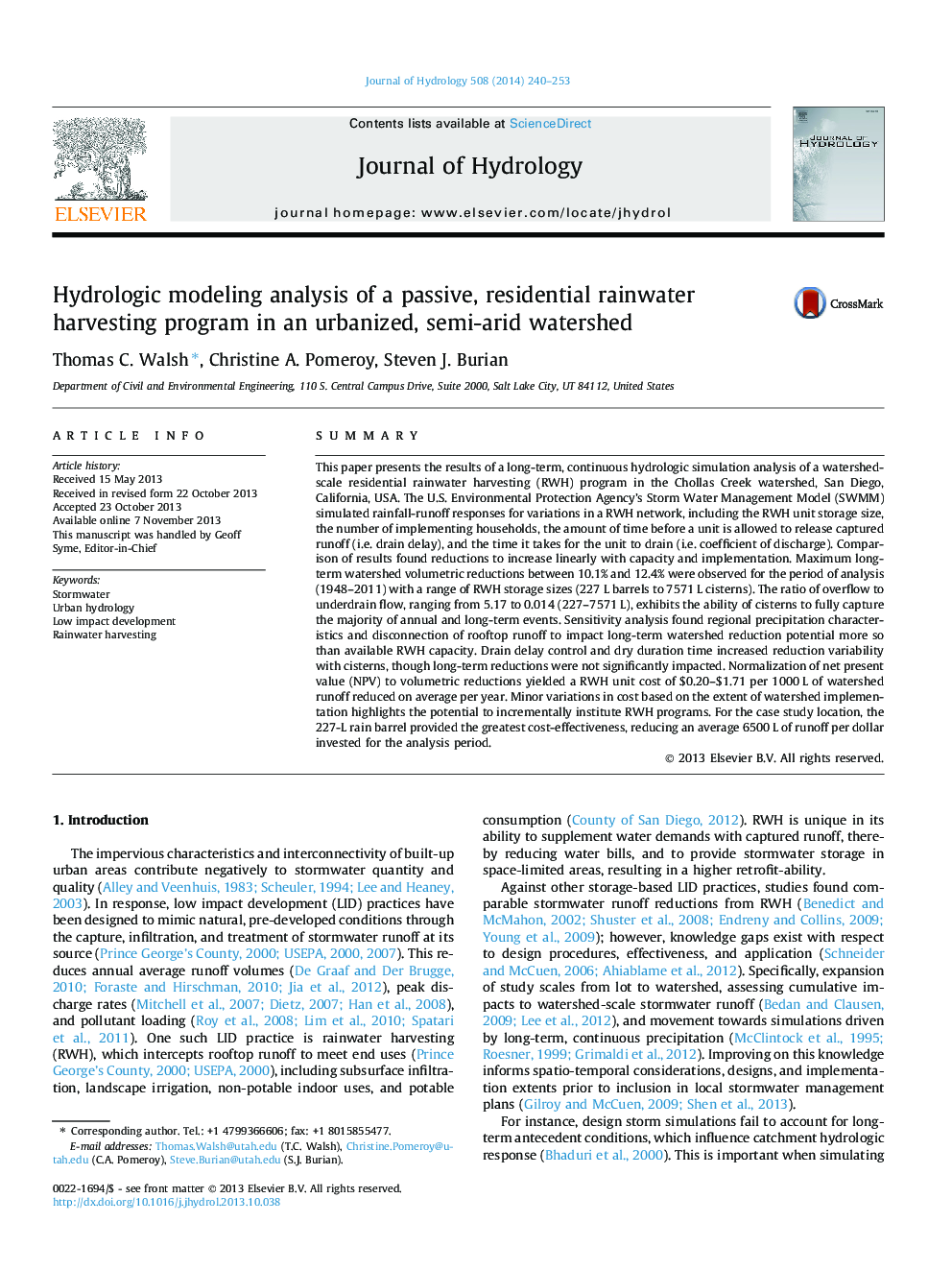| کد مقاله | کد نشریه | سال انتشار | مقاله انگلیسی | نسخه تمام متن |
|---|---|---|---|---|
| 4576051 | 1629940 | 2014 | 14 صفحه PDF | دانلود رایگان |
• Hydrologic modeling of watershed-scale rainwater harvesting on runoff reductions.
• Sensitivity analysis of varying capture capacity, watershed extent, and barrel management.
• Increasing capacity and implementation extent provide increasing reductions in runoff volume.
• Precipitation characteristics and downspout disconnection dampen reduction differences due to RWH capacity.
• Smaller storage sizes (e.g. barrels) are more cost-effective than larger (e.g. cisterns).
SummaryThis paper presents the results of a long-term, continuous hydrologic simulation analysis of a watershed-scale residential rainwater harvesting (RWH) program in the Chollas Creek watershed, San Diego, California, USA. The U.S. Environmental Protection Agency’s Storm Water Management Model (SWMM) simulated rainfall-runoff responses for variations in a RWH network, including the RWH unit storage size, the number of implementing households, the amount of time before a unit is allowed to release captured runoff (i.e. drain delay), and the time it takes for the unit to drain (i.e. coefficient of discharge). Comparison of results found reductions to increase linearly with capacity and implementation. Maximum long-term watershed volumetric reductions between 10.1% and 12.4% were observed for the period of analysis (1948–2011) with a range of RWH storage sizes (227 L barrels to 7571 L cisterns). The ratio of overflow to underdrain flow, ranging from 5.17 to 0.014 (227–7571 L), exhibits the ability of cisterns to fully capture the majority of annual and long-term events. Sensitivity analysis found regional precipitation characteristics and disconnection of rooftop runoff to impact long-term watershed reduction potential more so than available RWH capacity. Drain delay control and dry duration time increased reduction variability with cisterns, though long-term reductions were not significantly impacted. Normalization of net present value (NPV) to volumetric reductions yielded a RWH unit cost of $0.20–$1.71 per 1000 L of watershed runoff reduced on average per year. Minor variations in cost based on the extent of watershed implementation highlights the potential to incrementally institute RWH programs. For the case study location, the 227-L rain barrel provided the greatest cost-effectiveness, reducing an average 6500 L of runoff per dollar invested for the analysis period.
Figure optionsDownload as PowerPoint slide
Journal: Journal of Hydrology - Volume 508, 16 January 2014, Pages 240–253
